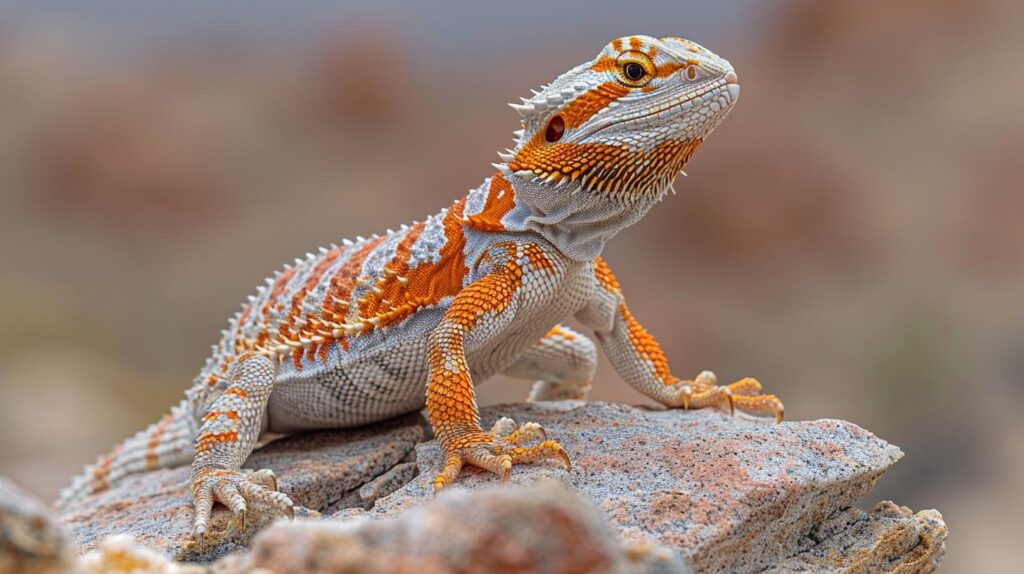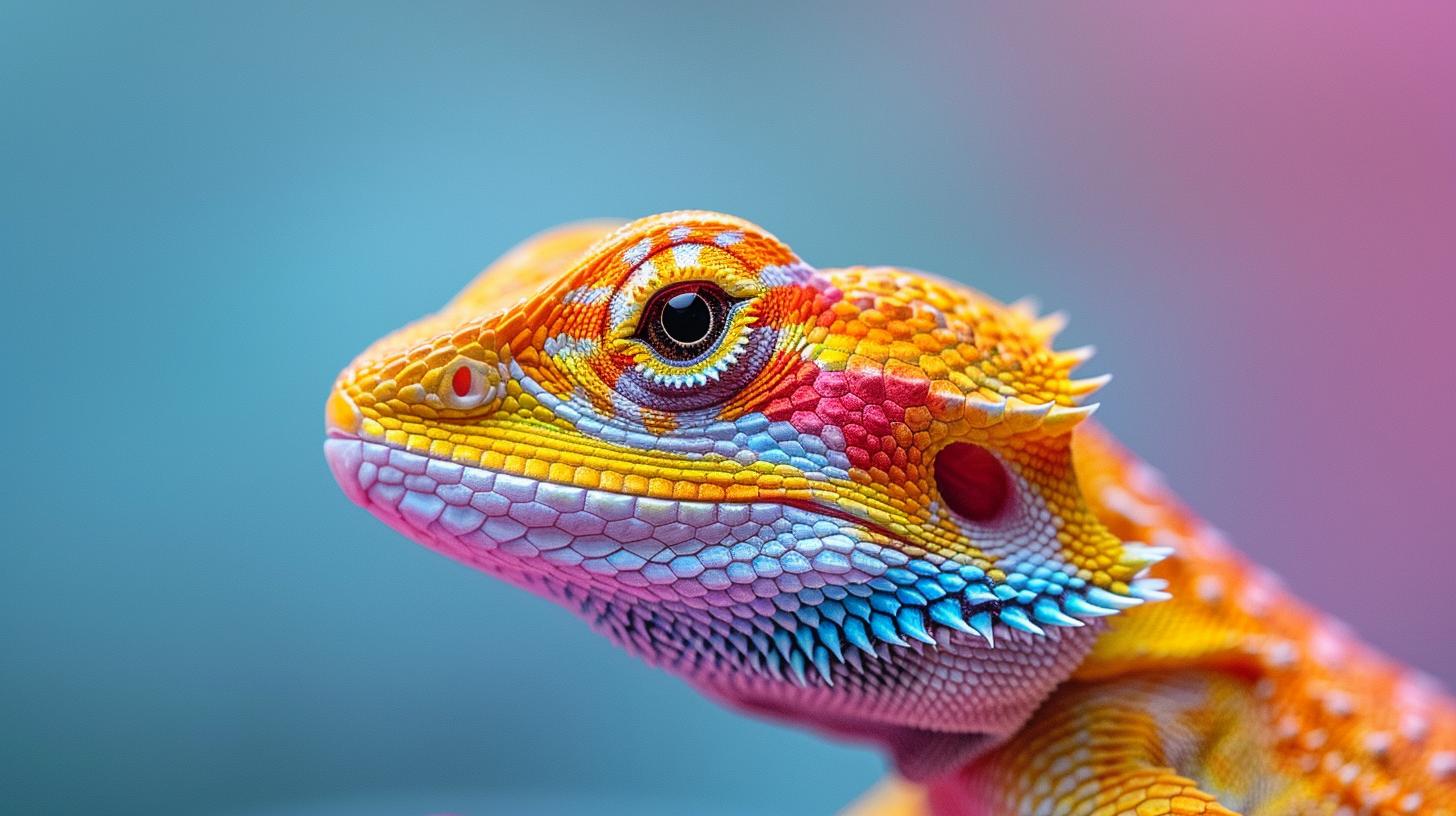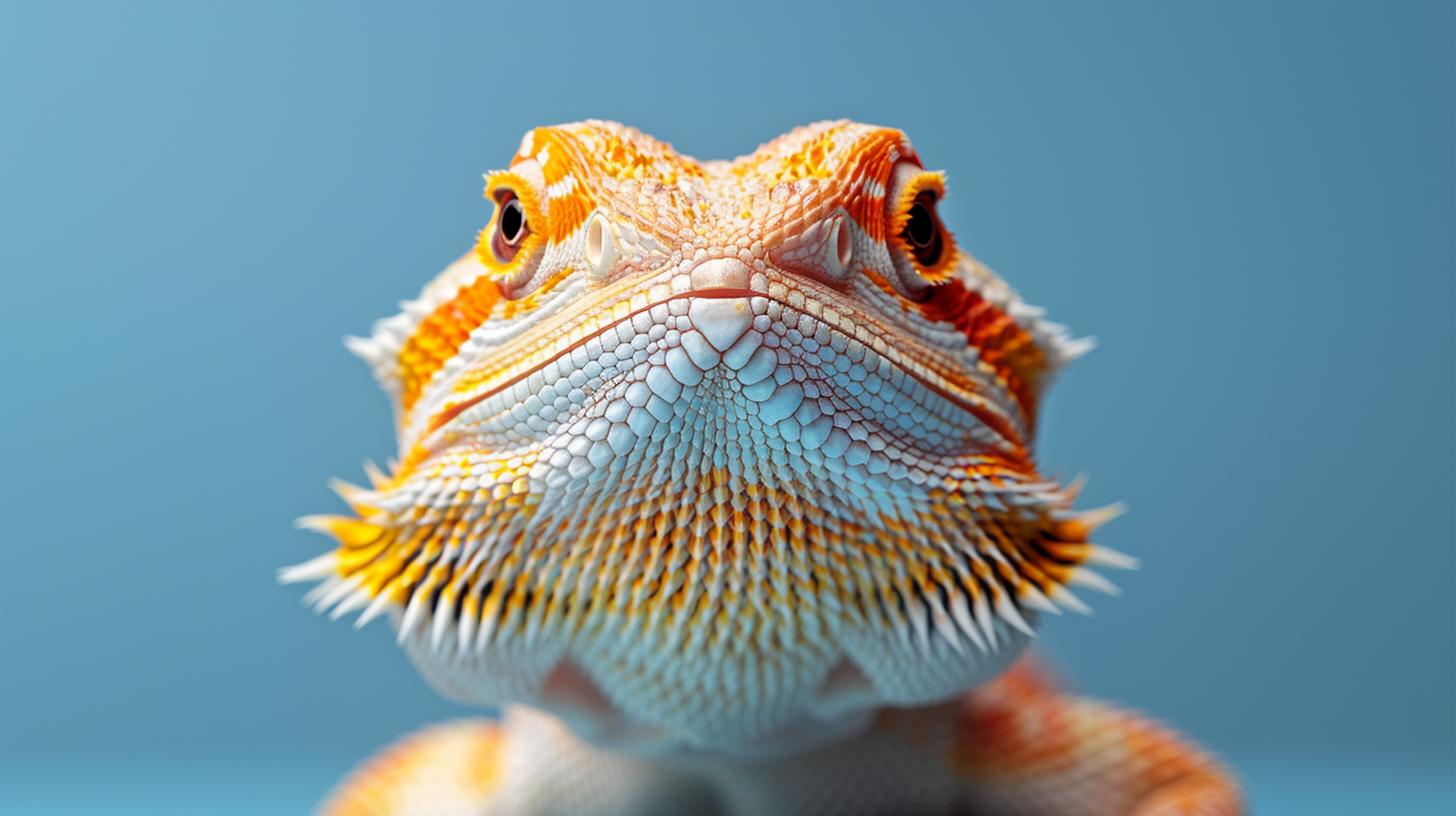7 Key Steps for Bearded Dragon Humidity Wellness

Understanding Humidity Needs
In ensuring the health and wellness of your bearded dragon, understanding their humidity needs plays a foundational role. Originating from arid to semi-arid environments, these reptiles thrive in specific humidity conditions that mimic their natural habitat.
This pivotal aspect of bearded dragon wellness not only keeps them comfortable but also guards against health issues that can arise from improper environmental settings. Grasping the significance of maintaining these levels is your first step towards creating an optimal living space for your pet.
Diving into the *specific humidity requirements* reveals why such attention to detail is indispensable. Bearded dragons, by nature, are accustomed to environments where the humidity doesn't fluctuate drastically. Matching this condition in captivity requires a nuanced understanding of their biological needs and how deviations can impact their well-being. Recognizing that their comfort and health are directly influenced by the ambiance we provide sets the stage for more informed, attentive care practices.
Moreover, explaining why this aspect is critical involves linking it back to their origins. Bearded dragons hail from areas where the air's moisture content is typically low, but still present-a balance that supports their unique physiological processes such as skin shedding and respiratory function.
By correlating these environmental needs with effective husbandry techniques, owners are better equipped to foster a habitat that doesn't just sustain life but promotes flourishing health and vitality among these engaging reptiles. This connection highlights not only the importance of replicating such conditions but also underscores our responsibility as pet owners to ensure our bearded dragons' surroundings contribute positively to their overall wellness.
Identifying Signs of Improper Humidity
Identifying the signs of improper humidity is pivotal for maintaining *bearded dragon wellness*. Bearded dragons, indigenous to arid and semi-arid regions, thrive in environments with specific humidity levels that mimic their natural habitat. Too high or too low humidity levels can precipitate a myriad of health issues, ranging from respiratory infections to shedding problems. Being vigilant about the physical and behavioral signs your pet exhibits can help you adjust conditions to better suit their needs.
One noticeable sign of inadequate humidity for bearded dragons is difficulty in shedding. In an environment with too low humidity, you may observe patches of old skin clinging to your pet for longer than usual. This condition, known as dysecdysis, can be uncomfortable and even lead to infections if not addressed promptly.
Conversely, excessive humidity can lead to fungal growth on the skin and within the habitat, endangering your pet's health. Monitoring your bearded dragon's skin condition provides crucial insights into whether the enclosure's humidity levels need adjustment.
Behavioral changes also serve as indicators of improper humidity levels. A bearded dragon living in overly dry conditions might spend more time soaking in its water bowl, trying to compensate for the lack of moisture in its environment.
On the flip side, if the habitat is too moist, you might find your pet basking under its heat lamp more often than usual in an attempt to stay dry and comfortable. These behavioral cues highlight the reptile's instinctive attempts to self-regulate according to environmental conditions but signal that adjustments are necessary to ensure optimum *bearded dragon wellness*.
| Sign | Indicates Possible |
|---|---|
| Patches of old skin not shedding properly | Too Low Humidity |
| Fungal growth on skin or habitat | Too High Humidity |
| Excessive soaking behavior | Seeking Moisture (Too Low Humidity) |
| Frequent basking away from moist areas | Avoiding Excess Moisture (Too High Humidity) |
Recognizing these signs early allows for timely intervention, either through adjusting misting schedules, modifying enclosure setups, or consulting with a reptile-savvy veterinarian. Making these changes not only bolsters your bearded dragon's overall health but enriches their life quality significantly by approximating the natural conditions they evolved to thrive in.
As we delve deeper into strategies for controlling and maintaining ideal humidity levels within your bearded dragon's enclosure in subsequent sections, remember that consistency and vigilance are key components of successful *bearded dragon wellness* management.
Tools and Equipment for Humidity Control
In the pursuit of optimal bearded dragon wellness, understanding and managing the humidity levels within their enclosure becomes a paramount concern. Achieving the right balance can often feel like a fine art, requiring not just intuition but the right tools and equipment.
In this journey towards creating a habitat that mirrors their natural environment as closely as possible, pet owners must become acquainted with an array of devices designed to monitor and control humidity. This knowledge ensures that these beloved reptiles flourish in conditions that cater to their specific needs, which is essential for their health and happiness.
The diversity of options available can be overwhelming, but by breaking down the types of tools and how they function within an ecosystem tailored to *bearded dragons*, clarity can be achieved. Understanding what each piece of equipment offers helps streamline the decision-making process, ensuring that every choice contributes positively to the overall wellness strategy for your reptile friend.
Hygrometers: The First Line of Defense
At the foundation of any humidity management plan is the hygrometer. This simple yet critical instrument measures the percentage of moisture in the air, providing a clear snapshot of the current humidity level within your bearded dragon's enclosure.
Digital hygrometers, in particular, are known for their accuracy and ease of use, offering real-time data that aids in making immediate adjustments should levels veer off course. Incorporating one or more hygrometers into your setup allows for constant monitoring-a fundamental step in sustaining an environment conducive to your pet's health.
Misting Systems: Automating Humidity Control
For those seeking a more hands-off approach to regulating humidity, automated misting systems provide an elegant solution. These systems can be programmed to release fine sprays of water at predetermined intervals throughout the day, effectively mimicking the natural dew and rainfall cycles found in a bearded dragon's wild habitat. Apart from maintaining consistent moisture levels, these misting sessions also offer welcome hydration for your pet-a crucial element in supporting their overall wellbeing.

Humidity Controllers: Precision at Your Fingertips
Taking technology one step further, *humidity controllers* offer unparalleled precision in maintaining desired humidity ranges within an enclosure. These sophisticated devices work by connecting to both humidifiers and dehumidifiers, automatically activating either based on real-time readings from integrated sensors. By setting specific thresholds (e.g.
30-40% relative humidity), you ensure that your bearded dragon's home remains within optimal parameters-without constant manual adjustments. The integration of such a system elevates environmental control, paving the way for proactive rather than reactive management practices when it comes to bearded dragon wellness.
These tools-hygrometers, misting systems, and humidity controllers-not only simplify day-to-day care but actively contribute to creating a habitat where bearded dragons can thrive. Each plays a unique role in achieving and maintaining just-right humidity levels; combined effectively; they form a powerful defense against issues arising from improper environmental conditions.
Creating a Humidity-Friendly Environment
Creating an environment that supports the optimal humidity levels for a bearded dragon is essential for their health and well-being. Given their native arid and semi-arid habitats in Australia, achieving the right balance can be challenging but is crucial for mimicking their natural surroundings.
This balance prevents health issues such as respiratory infections or skin problems associated with incorrect humidity levels. Moreover, a well-set-up habitat promotes overall bearded dragon wellness, ensuring they live a happy, comfortable life under your care.
The correct selection of enclosures, substrates, and decorations plays a significant role in this process. Not only do these elements need to physically accommodate your bearded dragon, but they must also facilitate the maintenance of proper humidity without fostering environments where harmful bacteria or fungi can thrive. By focusing on creating a habitat that closely resembles their natural setting, you provide your bearded dragon with the ideal conditions to flourish.
Type of Enclosure: A Cornerstone of Humidity Control
Choosing the right type of enclosure is fundamental in managing humidity levels effectively. Glass terrariums are popular due to their durability and ease of cleaning; however, they can sometimes trap too much moisture if not properly ventilated.
On the other hand, mesh-topped enclosures offer excellent ventilation, helping prevent excess humidity from accumulating. It's critical to find a balance that retains enough moisture to meet your bearded dragon's needs while allowing excess humidity to escape to prevent damp conditions that could lead to health issues.
Choosing the Right Bedding
Substrate selection directly impacts not just cleanliness and comfort but also ambient humidity within the enclosure. Materials like reptile carpet or ceramic tiles are easy to clean and maintain but do little in terms of humidifying the air. Conversely, natural substrates like coconut fiber or specially formulated reptile bark help retain moisture and release it slowly over time, aiding in maintaining consistent humidity levels. However, it's important to monitor these substrates for signs of mold or mildew development regularly.
Decorations That Promote Healthy Humidity
Beyond mere aesthetics, decorations within a bearded dragon's habitat can play an active role in regulating humidity. Live plants are particularly beneficial as they undergo transpiration, naturally adding moisture into the air-this feature is especially useful in drier climates or during winter months when indoor heating can drop internal humidity drastically. Additionally, including water features such as shallow bowls or drippers not only provides hydration through drinking but also contributes marginally to ambient humidity through evaporation.
This careful consideration in selecting compatible enclosures materials ensures that maintaining an optimal living environment becomes more manageable and sustainable long-term-keeping your reptilian companion thriving without inadvertent health risks due to improper management practices.
Daily Humidity Management Techniques
Creating and maintaining an ideal humidity environment is pivotal for the bearded dragon wellness. An essential part of daily care involves routines that consistently monitor and adjust the humidity level within your bearded dragon's habitat. This ensures they thrive, mirroring the moisture levels of their natural desert habitats, which fluctuates between 30% to 40%. Here are practical techniques designed to help you manage these crucial levels effectively.
Firstly, establishing a regular *misting schedule* can significantly influence the enclosure's humidity. Misting the habitat lightly in the morning helps mimic the dewy conditions of a desert dawn. It's important not to overdo it; excessive wetness can lead to health issues like skin infections or respiratory problems in bearded dragons. Implementing a balanced routine-perhaps once in the morning with a light spray-can maintain the right level of moisture without making things too damp.
Secondly, incorporating *water bowls* within your bearded dragon's enclosure plays a dual role. Not only do they provide necessary hydration but also aid in gently increasing the enclosure's ambient humidity. Placing a shallow bowl of water inside can help, especially during drier periods or seasons. Nonetheless, regular cleaning is crucial to prevent bacterial growth and ensure it remains a healthy source of humidity.
Lastly, introducing *live plants* into your bearded dragon's habitat offers an aesthetically pleasing method to naturally regulate humidity. Certain desert plants or those suited to arid climates can absorb excess moisture while providing cover and enrichment for your pet.
Some suitable options include succulents like aloes or some varieties of cacti that don't pose a threat to your reptile friend's safety. However, always research beforehand to ensure any plant added is safe and non-toxic for bearded dragons.
- Establish a routine misting schedule tailored for early mornings.
- Use shallow water bowls for both hydration and ambient moisture balance.
- Incorporate live plants compatible with arid environments for natural regulation.
Adhering to these techniques daily will proactively support your bearded dragon's wellness by maintaining optimal humidity within their habitat. Remember, consistency is key in preventing health issues related to improper humidity levels. Moving forward, adjusting your approach as seasons change will further solidify your efforts towards creating a thriving environment for your bearded dragon.

Seasonal Adjustments for Humidity Control
As seasons transition from the warmth of summer to the crisp coolness of autumn and into the chill of winter, the humidity levels within our homes-and consequently within our bearded dragon enclosures-fluctuate significantly. For reptile enthusiasts dedicated to bearded dragon wellness, understanding and adapting to these changes is paramount in ensuring a thriving habitat. The shift in outdoor humidity and temperature affects indoor environments, prompting a need for adjustments in how we manage our pet's surroundings.
To maintain optimal conditions within your bearded dragon's habitat, consider implementing these strategies:
- Increase monitoring: Regularly check the humidity levels with a hygrometer as seasons change. The frequency of checks should increase during transitional periods between seasons when outdoor conditions can dramatically alter the indoor humidity.
- Adjust water provision methods: During dryer months, you might need to mist your bearded dragon's enclosure more frequently or provide larger water bowls to increase ambient moisture. Conversely, in more humid seasons, reducing the frequency of misting and monitoring water bowl sizes can help keep humidity at ideal levels.
- Consider room humidifiers or dehumidifiers: In areas experiencing extreme seasonal shifts impacting indoor air quality, employing devices like humidifiers in winter and dehumidifiers during humid summers can offer a controlled solution to maintaining stable humidity within your bearded dragon's environment.
Adaptability plays a critical role in ensuring your pet's wellbeing throughout different times of the year. As such, it's beneficial to create a seasonal care guide tailored specifically for your climate zone. This could involve setting reminders to adjust heating sources within your bearded dragon's enclosure as external temperatures drop or planning an increase in substrate depth to better retain moisture when heating needs rise.
In addition to these adjustments, regular assessments of your bearded dragon's physical condition are crucial. Look for signs that may indicate discomfort or health issues related to improper humidity levels-a topic previously explored that highlights physical and behavioral cues worth monitoring.
The interplay between changing seasons and *bearded dragon wellness* cannot be overstated. Ensuring you have a firm grasp on how seasonal shifts affect enclosure conditions will go a long way in fostering a healthy environment for your pet. Employing proactive measures rather than reactive corrections not only stabilizes their habitat but also minimizes stress associated with sudden environmental changes-for both you and your reptilian companion.
While this section prepares you for making informed decisions regarding seasonal adjustments for better humidity control, our journey towards creating an ideal environment for our bearded dragons doesn't end here. Further exploration into efficient daily management techniques and knowing when professional help is necessary form essential pillars supporting comprehensive bearded dragon care beyond just humidity considerations.
When to Seek Professional Help
In wrapping up our journey through the essential steps toward ensuring your bearded dragon's humidity wellness, we've traversed from understanding their fundamental needs rooted in their desert origins to recognizing when those needs aren't being met. It's clear that maintaining the correct humidity levels is not merely about replicating an environment; it's pivotal for the health and happiness of these fascinating creatures.
With proactive management and the right tools at hand, every owner can create a thriving habitat for their bearded dragon, keeping them lively and well.
Among the key insights shared, perhaps none is as vital as knowing when your efforts at home need to be supplemented with professional expertise. This step transcends basic care-it acknowledges that sometimes, despite our best efforts, the wellness of our bearded dragons requires the specialized knowledge that only veterinary professionals can provide.
This recognition doesn't signify failure but exemplifies responsible pet ownership. Taking swift action by seeking expert advice at the sign of persistent humidity-related issues reflects a deep commitment to bearded dragon wellness.
As you continue on your quest to provide the best possible care for your bearded dragon, remember that each step you take enriches both your life and theirs. Our website stands as a resource filled with comprehensive guides, tailored advice, and supportive insights designed to assist you on this rewarding journey.
Whether you're fine-tuning your humidity management techniques or exploring other aspects of reptile care, we invite you to delve further into our articles. Together, let's ensure that every bearded dragon enjoys a life of optimal wellness and happiness.
Frequently Asked Questions
How Do I Keep My Bearded Dragon Healthy?
Keeping a bearded dragon healthy involves providing a balanced diet, ensuring their habitat is clean and has the correct temperature gradients, and regularly monitoring for signs of illness. A diet rich in appropriate vegetables and live food, such as crickets or worms, combined with supplements like calcium can promote good health.
Clean water should always be accessible. Regular visits to a veterinarian experienced with reptiles are also recommended to check for potential health issues.
What Are the 5 Needs for a Bearded Dragon?
The five needs for a bearded dragon include proper nutrition, suitable habitat, correct lighting and temperature gradients, regular exercise, and veterinary care. Nutrition involves a diet of vegetables, fruits, and insects supplemented with vitamins and minerals. Their habitat must mimic their natural environment with enough space to move around.
Correct lighting includes UVB light essential for vitamin D3 synthesis. Temperature gradients in the enclosure allow them to regulate their body temperature effectively. Regular exercise encourages natural behaviors, and prompt veterinary care ensures any health concerns are addressed early.
Are Bearded Dragons High Maintenance?
Bearded dragons are moderately maintenance pets when compared to other pets like dogs or cats but require specific care that can be considered high maintenance by some standards. They need a well-maintained environment that mimics their natural habitat with precise temperature and lighting requirements.
Their dietary needs are quite specific—requiring a mix of vegetables, fruits, and live prey supplemented with vitamins and minerals—plus they need regular handling to keep them tame and accustomed to human interaction. While rewarding, owning a bearded dragon does require commitment to meeting these unique needs consistently.
Leave a Reply
You must be logged in to post a comment.